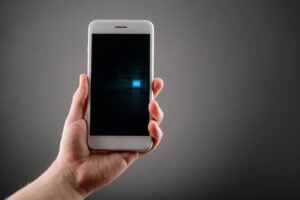Picture this: you’re settling into your seat on a flight, excitedly anticipating your upcoming adventure. As the cabin crew makes their final announcements, you reach for your smartphone to send a quick message before takeoff. But wait! Before you hit send, it’s crucial to ensure that your phone is in airplane mode.
Airplane mode is not just a mere inconvenience or an optional feature; it plays a vital role in air travel safety. By activating airplane mode on your electronic devices, you comply with airline regulations and prevent any potential interference with aircraft communication systems. Understanding why airplane mode is important empowers passengers to make informed decisions and contribute to a safer and smoother flying experience.
When you activate airplane mode on your device, you can still access other features like playing games, listening to music stored locally on your device, or reading ebooks without needing an internet connection. Additionally, you can also receive upvotes for your posts on social media platforms.
Why is airplane mode important during flights?
Airplane mode is not just a setting on your phone that you activate when you’re jetting off to your next adventure. It serves a crucial purpose during flights, ensuring the safety and smooth operation of the aircraft. Let’s explore why airplane mode is important and why you should use it whenever you fly.
Preventing Interference with Aircraft Navigational Equipment
One of the primary reasons for using airplane mode is to prevent potential interference with an aircraft’s navigational equipment. Mobile devices emit signals that can interfere with the sensitive instruments onboard the plane, such as GPS systems and communication radios. By activating airplane mode, you disable these signals and eliminate any risk of disrupting critical navigation systems.
Ensuring Uninterrupted Communication Systems
In addition to navigational equipment, airplanes rely on various communication systems for safe operation. These systems include air traffic control communications, cockpit communications between pilots, and ground-to-air communications in case of emergencies. When mobile devices are not in airplane mode, they can cause interference or even disrupt these vital communication channels. By using airplane mode, you play your part in maintaining uninterrupted communication systems on board.
Contributing to a Safe Flight Experience
Using airplane mode is not just about following airline regulations; it contributes to a safe flight experience for everyone on board. Distractions from phone calls, text messages, or notifications could divert passengers’ attention from important safety instructions or emergency procedures. Engaging airplane mode reduces distractions and encourages passengers to focus on their surroundings and any necessary safety instructions provided by the cabin crew.
Consequences of not using airplane mode on a flight
Interference with Aircraft Systems
Failing to activate airplane mode during a flight can have serious consequences. One of the main reasons why it is important to use airplane mode is that electronic devices, such as smartphones and tablets, emit signals that can interfere with an aircraft’s instruments or radios. These signals can disrupt the communication between the pilot and air traffic control, potentially compromising the safety of the flight.
Disruptions in Onboard Systems
When electronic devices are not in airplane mode, they continue to search for cellular signal or Wi-Fi connections. This unintentional signal transmission can cause disruptions in onboard systems, including navigation and communication systems. Even though the chances of interference are low, it is better to be safe than sorry by activating airplane mode.
Penalties and Legal Consequences
Airline regulations require passengers to follow certain safety protocols, including using airplane mode when instructed by the cabin crew. Failure to comply with these regulations may result in penalties or legal consequences for passengers. It’s important to respect these rules not only for personal safety but also to avoid any unnecessary complications during your journey.
Discomfort Among Fellow Travelers
Using electronic devices without activating airplane mode can also lead to discomfort among fellow travelers. The constant buzzing or ringing of phones, along with notifications from social media apps, can be disruptive and annoying for those around you. By switching on airplane mode, you demonstrate consideration for others and help create a more peaceful environment onboard.
Differences between inflight WiFi and airplane mode
Inflight WiFi vs. Airplane Mode: What’s the Difference?
In today’s world, staying connected is essential, even when we’re 30,000 feet up in the air. That’s where inflight WiFi comes into play. Airplane mode is a feature that allows us to access the internet during flights, keeping us connected with friends, family, and work obligations. On the other hand, airplane mode serves a different purpose – it disables all wireless signals on our devices entirely. Let’s dive into the differences between these two options.
Paying for Connectivity or Staying Offline
You’ll need to pay for internet connectivity or have a subscription in place before boarding your flight. This service enables you to stay online throughout your journey and enjoy all the benefits of being connected in the sky.
Airplane mode, however, doesn’t require any payment or subscription. Airplane mode is a feature that allows you to use your devices offline while onboard the aircraft. It is designed to ensure that your devices do not emit any wireless signals that could interfere with the airplane’s communication systems. By activating airplane mode, you can still access content that has been downloaded beforehand without incurring any additional charges.
Online Access vs. Wireless Signals Disabled
Inflight WiFi operates through satellite or ground-based networks that are specifically designed to provide internet connectivity during flights. This means that as long as you have an active connection and payment plan in place, you can browse websites, check emails, stream videos, and engage with social media platforms from the comfort of your seat.
On the flip side, airplane mode disables all wireless signals on your device entirely. This is necessary during certain phases of the flight when electronic devices can potentially interfere with aircraft systems. By activating airplane mode when instructed by cabin crew or during takeoff and landing procedures (as indicated by airline regulations), you ensure compliance with safety protocols while still having access to offline content.
When to activate or deactivate airplane mode
Activating Airplane Mode: Before Takeoff and During the Flight
To ensure a smooth and safe journey, it is crucial to activate airplane mode on your mobile devices before takeoff. This step is typically advised by the airline crew and should be maintained until the aircraft has landed. Even if the airplane offers inflight WiFi services, it’s important not to skip this step.
The Importance of Airplane Mode during the Flight
Activating airplane mode during the flight helps prevent potential interference with the aircraft’s communication systems. By disabling cellular connections, Wi-Fi, and Bluetooth, you minimize any signal disruptions that could affect critical navigation systems.
While modern aircraft are designed to withstand minimal interference from electronic devices, it’s better to err on the side of caution. Following proper protocol ensures a safe and enjoyable flight for everyone on board.
Deactivating Airplane Mode: After Landing
Once your flight has landed and reached a safe taxiing speed, you can proceed to deactivate airplane mode. At this point, you can reconnect with cellular networks or use inflight WiFi if available.
However, it’s essential to follow specific instructions from airline staff regarding when it is appropriate to deactivate airplane mode. Different airlines may have slightly different guidelines based on their specific policies or regulations.
By adhering to these instructions, you contribute to maintaining a secure aviation environment while also complying with industry standards.
Key considerations for phone usage in relation to airplane mode
Airplane mode is not just about completely disconnecting from the digital world while flying. It offers a range of possibilities for phone usage, even without an active cellular connection. With bluetooth in airplane mode, the phone can still be used for various tasks. Let’s explore some key considerations.
Non-Wireless Activities
Enabling airplane mode doesn’t mean you have to bid farewell to your device for the entire flight. You can still enjoy non-wireless activities like reading e-books, playing games, or listening to music stored on your phone.
Limited Device Functionality
While in airplane mode, you won’t be able to make phone calls or send text messages since these functions rely on a cellular network. However, essential offline features such as alarms and calendars will continue working as usual.
Airline-Specific Policies
It’s important to note that airline policies regarding device usage may vary. Some airlines permit limited use of devices during specific phases of the flight, even with airplane mode activated. These policies enable passengers to engage with their devices while ensuring safety and compliance.
Familiarize Yourself with Airline Policies
To make the most of your device during a flight, familiarize yourself with individual airline policies regarding device usage alongside airplane mode. This knowledge will help you understand any restrictions or allowances specific to each airline.
By understanding these key considerations and being aware of individual airline policies, you can optimize your phone usage while maintaining compliance with safety regulations. So next time you’re on a flight, take advantage of airplane mode for non-wireless activities and stay informed about what you can do with your device at different stages of the journey.
Emphasizing the significance of airplane mode
Now that you understand the definition and functionality of airplane mode, as well as why it is important during flights and the consequences of not using it, let’s recap its significance. Airplane mode is not just a mere setting on your device; it plays a crucial role in ensuring a safe and uninterrupted flight experience. By activating airplane mode, you contribute to maintaining the integrity of the aircraft’s communication systems and prevent potential interference.
So next time you board a plane, remember to switch on airplane mode before takeoff. It’s a small action with significant benefits for both yourself and everyone else on board. By doing so, you actively participate in creating a secure environment while demonstrating respect for your fellow passengers and crew members.
FAQs about Airplane Mode:
How does airplane mode affect battery life?
When you activate airplane mode, your device stops searching for network signals or connecting to Wi-Fi networks. This reduction in activity significantly conserves battery power since your phone isn’t constantly scanning for signals or transmitting data.
Can I use Bluetooth while in airplane mode?
Yes, you can still use Bluetooth when in airplane mode. Bluetooth technology operates on a different frequency than cellular networks, so it does not interfere with the aircraft’s communication systems. However, be mindful of any specific airline regulations regarding Bluetooth usage during flights.
Will I receive text messages or calls while in airplane mode?
No, when you activate airplane mode, all wireless communications are disabled. You will not receive any text messages or calls until you deactivate this setting upon landing or when permitted by airline regulations.
Can I listen to music or watch downloaded content while in airplane mode?
Absolutely! Airplane mode only disables wireless connections but allows offline features such as playing music stored locally on your device or watching downloaded content. So sit back, relax, and enjoy your favorite tunes or movies during the flight.
Do I need to activate airplane mode on my smartwatch or fitness tracker?
Yes, it is advisable to activate airplane mode on your smartwatch or fitness tracker as well. These devices also emit signals that can potentially interfere with the aircraft’s communication systems. By activating airplane mode on all your electronic devices, you ensure a safe and uninterrupted flight for everyone onboard.






